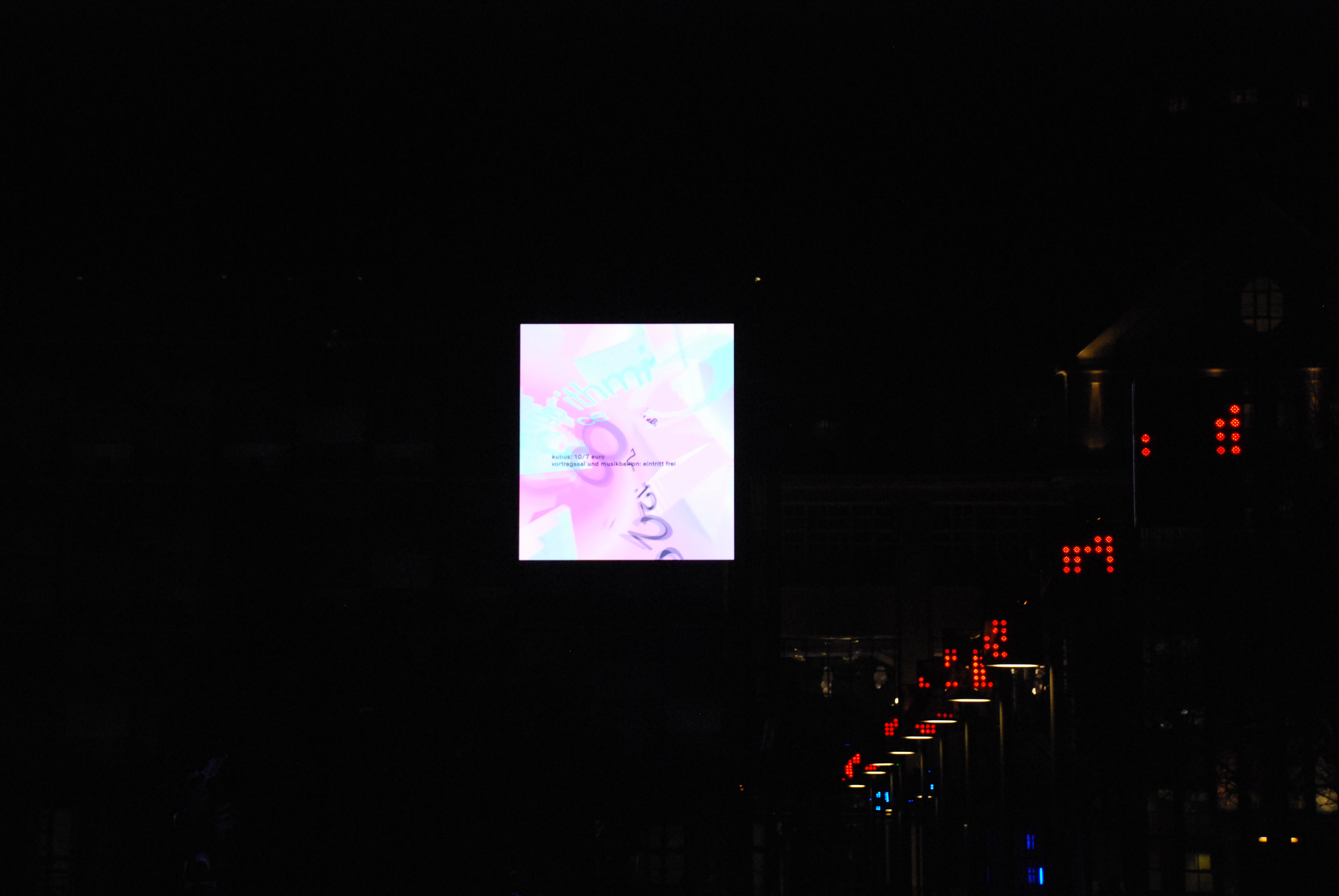Anemone Actiniaria
Live Performance
Anemone Actiniaria is an algorithmic improvisation duo founded by Hanns Holger Rutz and David Pirrò. In it, they algorithmically couple computer systems and introduce semi-autonomous agents. As artistic research project, the seemingly well-defined concept of algorithm is subject to a new reading based on material agencies. Mutual observation and overwriting is initiated between our systems, Wolkenpumpe (aka Sound Processes) and Rattle, rooted in physical modeling and in the generation of parametric models based on machine learning. This is inspired by the notion od an emergent new machine through "orientation" and "composition" as outlined by Heinz von Foerster and Dirk Baecker, whereby the functions of operators and operands of the formerly separated systems begin to vacillate.
{keywords: [coupling, systems, agents, algorithms, overwriting], project: AnemoneActiniaria}
Ya-Wen Fu
Alive Mixed Media Performance
Ya-Wen Fu seeks to discuss the issues about the definition of the surroundings in her artworks. As Maurice Merleau-Ponty describes: "The human body inhabits in space; moreover, it itself is an expressive space". In Yan-Wen Fu's opinion, body movement is not like playing a musical instrument. Playing a musical instrument is more like using an object detaching from us. However, by creating movement in a body, we are also having conversations with it, by which we try to hurdle and define our surroundings. Which means that not only are our behaviors in daily life related to time and space or culture and society, they are also connected with the conditions and experiences of our body. In this artwork Fu tried to construct an apparatus with which face of the body etends itself into the room. Using tension springs show how the surface of the body extends in different lines. There is no intentionality in her movements. She also did not imagine the appearence of the specific ways the movement and mechanisms would be combined. But her body produces a continous dialogue between the apparatus and the room.
{keywords: [_, body, movement, instrument, surroundings, room]}
Mark Pilkington
Hidden Forest Audiovisual Performance
Hidden forest combines algorithmic sound and visuals diffused over a multi-channel speaker array and dual screen. An imaginary forest acts as an ecosystem inhabited by entitties whose presence is sensed through the movement of light and sound. Its through an appliance and identity of movement that allows us to comprehend their embodied existence in a spatial-temporal field. An EMS VCS3 synthesizer provides rich analogue sounds controlled by an algorithmic framework. The synthesizer's unique semi-modular design and wild/chaotic character portrays a disruptive link within the flow of the piece, while its tactile embodiment extend algorithmic space. The performance amplifies our senses to raise awareness of how the coexistence of natural and algorithmic space interacts to bring about social change.
{keywords: [_, forest, ecosystem, movement, sound, synthesizer]}
Tom Mudd
Gutter Synthesis Live Performance
Gutter synthesis consists of a number of interacting agents, each of which is a resonant nonlinear dynamical system that exhibits its own complex behaviour. Combining multiple voices creates emergent effects as the different systems exert a strong influence on each other, tethering their development so hthat they cluster around certain frequencies, timbres, and behaviours. Each speaker in the space is an individual synthesis voice, allowing the movement among the voices to be tracked, and the interactions between neighbouring voices to be heard.
{keywords: [_, synthesis, agents, dynamical, system, behaviour, emergence]}
Wilfred Amis
Music to Walk Through #1: Euclid's Algorithm Sound Installation
In this piece Euclid's algorithm (an early algorithm for determining the greatest common divisor) is sonified as a process in a corridor such that the listener walks through the algorithm. The pairs of integers returned at each step through the algorithm's while-loop are translated into sine tones that are harmonics of a common fundamental (48 Hz). The purely harmonic pitch language is chosen because it is prescribed by universal physical laws rather than Euro-centric conventions. The added result of this choice of pitch language is that the tones blend together to create a seemingly singular tone in the space that is shaped by the listener's movement through the space.
The piece is a static object within the space; each sine tone is static and each speaker is static. The movement is created instead by the listener, who walks through the music at their own pace, creating their own unique structure. The acoustics of the room itself should bring the sounds to life, adding imperfections to an otherwise perfect harmonic sound. If set up as an installation there are five movements that would be cycled through, changing movement every half hour. These five movements are the results of the five lowest summed pairs to have 9 steps. The first of these is (89,55) a consecutive pair of Fibonacci numbers who return a descending Fibonacci series through the steps through the while-loop. These 9 steps plus the starting position make 10 pairs, therefore 20 speakers. The diagram below shows speakers labelled with the harmonic they are producing.
{keywords: [_, euclid, sine tones, movement, structure, harmonics]}
Florian Hartlieb
Verzweigung Fixed Media
The piece Verzweigung is the symbiosis of five sound plants which are in constant musical movement, represented by the development of concrete sound to abstract sound mixture. If the respective "plants" are still to be assigned individually at the beginning, they grow farther and farther in the course of the piece into a shape. They crawl away, meet and move away, make ramifications and "overgrow" the area. Each sound plant consists of dynamic changing field recordings, divided into 12 delay channels, with different delay times and harmonic frequency shifts. Based on different algorithms, these frequenecy shifts generate sound spectra, that are different for each plant. This results in an acoustic space, which is in a constant motino and seems to commmunicate permanently with each other.
{keywords: [_, movement, plants, growth]}
